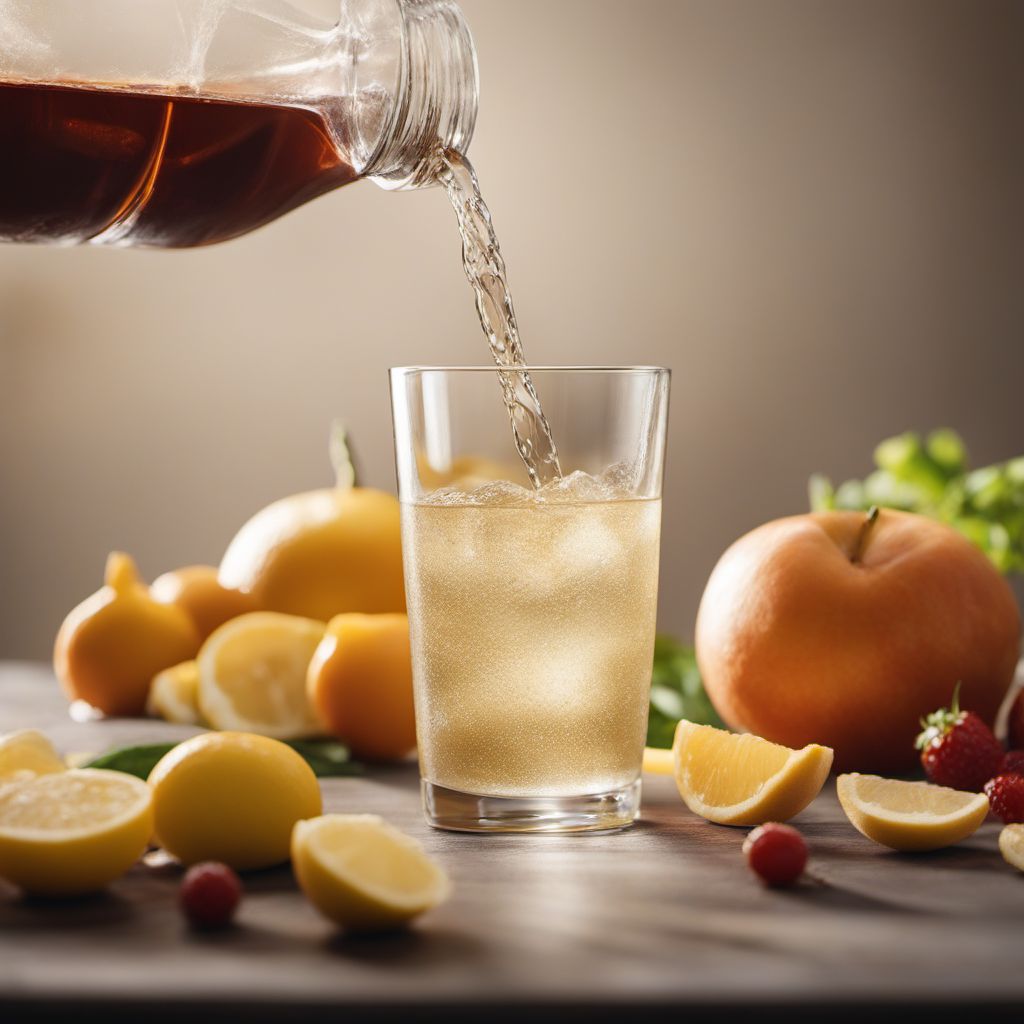
Ingredient
Drinking water
The Elixir of Life: Unveiling the Secrets of Drinking Water
Drinking water is a clear, odorless, and tasteless liquid that is essential for the survival of all living organisms. It is characterized by its purity, refreshing quality, and ability to quench thirst. With its neutral pH, water serves as a versatile ingredient that can be used in various culinary applications, such as boiling, steaming, braising, and as a base for soups, sauces, and beverages. Its texture is smooth and fluid, making it easy to consume and incorporate into different recipes. In terms of appearance, drinking water is transparent and can be found in various forms, including tap water, mineral water, spring water, and purified water.
Origins and history
The origin of drinking water dates back to the beginning of life on Earth. Water is a natural resource that can be found in lakes, rivers, streams, and underground sources. Throughout history, civilizations have recognized the importance of clean drinking water and developed various methods to obtain and purify it. Ancient civilizations, such as the Egyptians and Romans, built aqueducts and developed filtration systems to ensure a safe water supply. Today, access to clean drinking water is a global concern, and advancements in technology have allowed for improved purification methods and distribution systems.
Nutritional information
Drinking water is calorie-free and does not provide any significant nutrients. However, it is essential for maintaining proper hydration, supporting digestion, regulating body temperature, and facilitating the transportation of nutrients and waste products within the body.
Allergens
Drinking water does not contain any known allergens.
How to select
When selecting drinking water, it is important to consider its source and quality. Look for water that has been tested and meets the safety standards set by regulatory authorities. Check for any certifications or labels indicating that the water has undergone purification processes, such as reverse osmosis or distillation. Additionally, consider personal preferences, such as still or sparkling water, and choose packaging options that are environmentally friendly, such as reusable bottles or containers.
Storage recommendations
To maintain the freshness and quality of drinking water, store it in a cool, dry place away from direct sunlight and strong odors. Avoid storing water near chemicals or cleaning products that may contaminate it. It is recommended to consume water within a reasonable timeframe to ensure its freshness.
How to produce
While amateur individuals cannot produce drinking water on their own, they can ensure access to clean drinking water by installing water filtration systems or using water purification methods, such as boiling or using water filters.
Preparation tips
Drinking water requires no specific preparation. However, it is important to ensure that the water is clean and safe to consume. If using tap water, consider using a water filter or allowing the water to run for a few seconds to remove any impurities. For enhanced flavor, consider infusing water with fruits, herbs, or vegetables to create refreshing infused water.
Culinary uses
Drinking water is primarily used as a base for various beverages, such as teas, coffees, smoothies, and cocktails. It is also used in cooking methods like boiling, steaming, and braising, where it serves as a medium for heat transfer and helps to soften ingredients.
Availability
Drinking water is universally available and can be found in every region and country.
More ingredients from this category
Recipes using Drinking water » Browse all

Sardinian-style Spatzle with Tomato and Pecorino Sauce
Sardinian Delight: Tomato and Pecorino Spatzle

Kashmiri-inspired Spiced Meatballs
Kashmiri Delight: Fragrant Spiced Meatballs with a Twist

Javanese-style Grilled Meat Skewers
Sate Jawa: A Flavorful Twist on Grilled Meat Skewers

Chinese-style Tarte Tatin
Caramelized Apple Upside-Down Tart with a Chinese Twist

Gabonese-style Stuffed Rice Rolls
Savory Gabonese Rice Delights

Malvani Garlic Chutney
Fiery Garlic Delight: Malvani Style

Roti Chaud with a Guyanese Twist
Spiced Guyanese Roti Chaud: A Flavourful Fusion of Cultures

Hawaiian Kpwem Delight
Tropical Fusion: Hawaiian Kpwem Delight

Aromanian-style Smoked Pork Knuckle
Succulent Smoked Pork Knuckle with Aromanian Flair

Taiwanese-style Kung Pao Chicken
Spicy and Savory Taiwanese Kung Pao Chicken Delight

Turon with a Twist
Crispy Plantain Rolls with a Tropical Flair

Croatian-style Focaccia
Dalmatian Delight Focaccia